Memories of the Neiman Marcus Award
- Oops!Something went wrong.Please try again later.
- Oops!Something went wrong.Please try again later.
- Oops!Something went wrong.Please try again later.
- Oops!Something went wrong.Please try again later.
- Oops!Something went wrong.Please try again later.

Eighty-five years ago, Carrie Marcus Neiman, the late cofounder of Neiman Marcus, and Stanley Marcus, the retailer’s legendary president and chairman, founded the Neiman Marcus Distinguished Service Award to recognize excellence in fashion.
Over the years, the award has been given to more than 100 luxury fashion luminaries, ranging from Christian Dior and Coco Chanel to Yves Saint Laurent, Oscar de la Renta, Ralph Lauren, Missoni, Estée Lauder, Giorgio Armani, Valentino, Karl Lagerfeld and Miuccia Prada. It was last bestowed upon Carolina Herrera in 2016, but was discontinued until this year.
More from WWD
In many cases, especially with the European designers, the award had a significant impact, jumpstarting their businesses in the U.S. and even influencing their later designs, as is the case of Christian Dior. For some, such as Armani, traveling to Dallas to accept the award was one of the first times the designers had ever been to the U.S.
This year’s recipient of the Distinguished Service Award will be Brunello Cucinelli. In addition, the retailer is awarding Jonathan Anderson, creative director of Loewe, the Neiman Marcus Creative Impact Award and Amina Muaddi, founder of her own footwear and accessories brand, with the 2023 Neiman Marcus Innovation in the Field of Fashion Award. The honors will be presented to the three designers at a cocktail in Paris on March 5.
Here, several past recipients — either the designers themselves or representatives of the brand — recall what it was like to receive the award, and the impact it had on their businesses.
Valentino Garavani for Valentino (1967 award recipient)
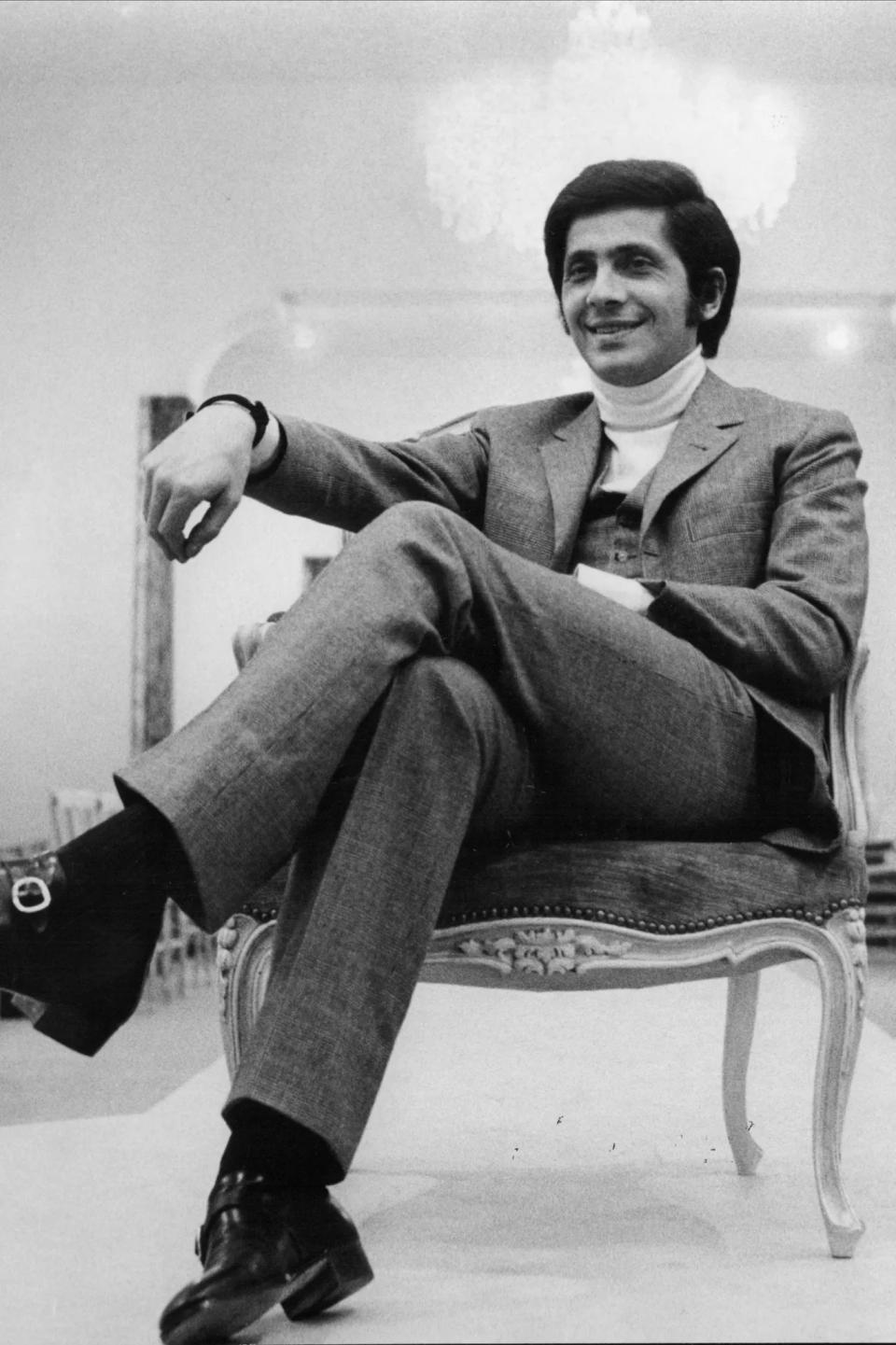
“I was at the very beginning of my career when the white collection made me internationally renowned…and it was then I discovered Dallas and Neiman Marcus.
“Mr. Marcus was a gentleman like very few in fashion then, and he showered me with kindness, inviting and hosting me on a visit to the city. I remember that I felt a lot of emotion when passing down the avenue, and seeing the building from which President Kennedy had been shot, and killed, just a few years earlier.
“Receiving this extremely prestigious award has always thrilled me and still today, when I see it in my studio, it fills me with beautiful memories.
“Thank you, Neiman Marcus!”
Chanel (Coco Chanel won in 1957; Karl Lagerfeld won in 2013)
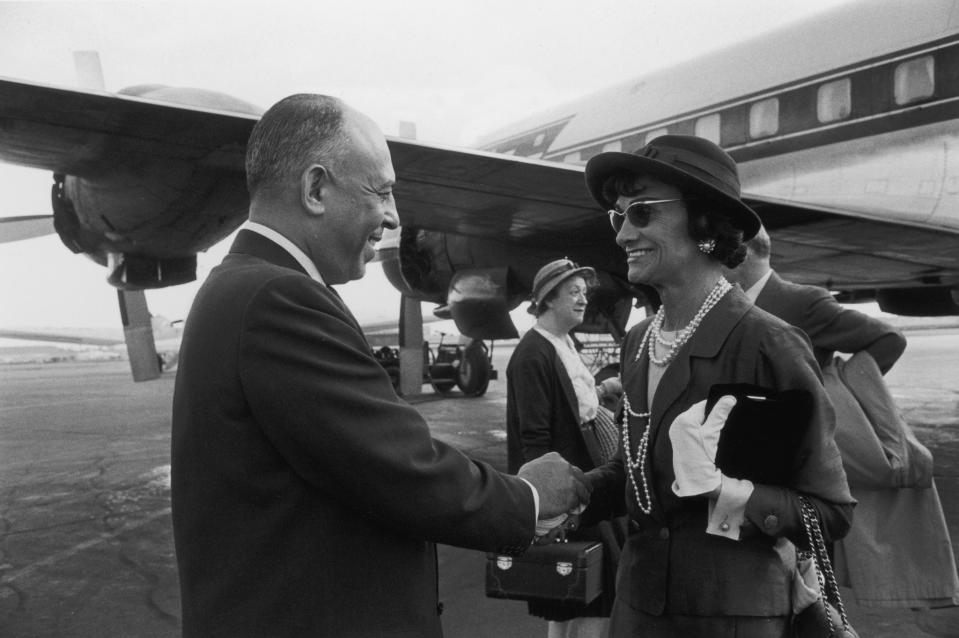
Gabrielle “Coco” Chanel
The First “Neiman Marcus Fortnight”: “France Comes to Texas”, was held Oct. 14 to 26, 1957. Stanley Marcus developed the idea to mark a half century of the Neiman Marcus stores and the festivities began with the arrival in Dallas of Gabrielle “Coco” Chanel, who was given the Neiman Marcus Award for Distinguished Service in the Field of Fashion. Rolls Royce, also celebrating its 50th anniversary in the United States that year, sent numerous cars to Dallas including a white model which welcomed Gabrielle Chanel on her arrival at the Love Field airport. More than 300 designers were invited to the event. Stanley Marcus had a special memory of that first Fortnight: “When that Air France plane came out of the skies at Love Field in 1957, it was the first time a foreign plane had ever landed at the Dallas Airport. It was loaded with 125 French visitors – and it was a great personal thrill.”
Chanel herself would tell The New Yorker in September 1957: “In America, it seems to me that people look at me in such a nice way,” she said. “In Europe today, it is as if people had no more time to be nice. I liked very much Texas. The people of Dallas, ah, je les aime beaucoup! Très gentils, très charmants, très simples. Never in the least haughty.”
Karl Lagerfeld
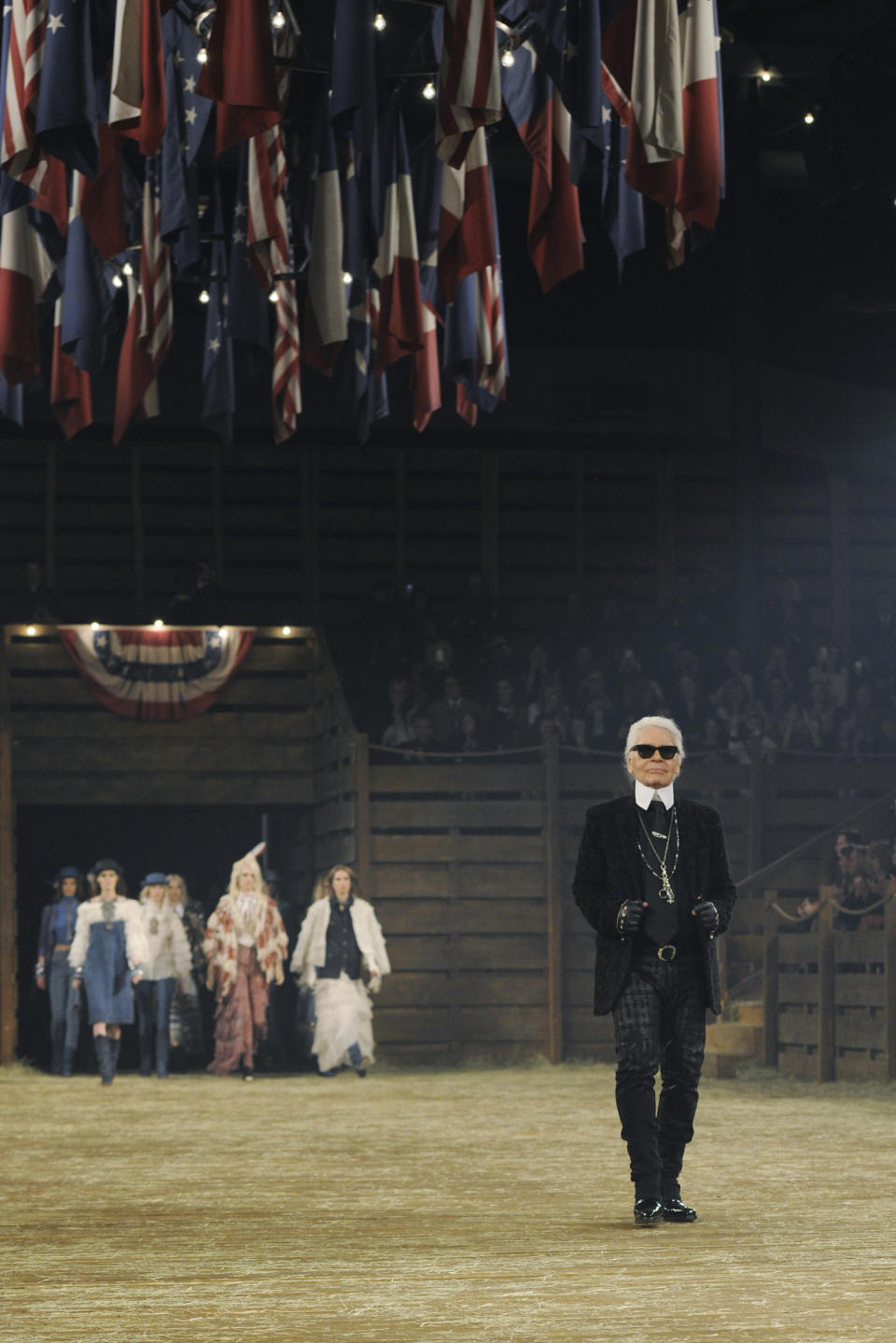
Karl Lagerfeld was given the award the day after presenting the Paris-Dallas Metiers d’art show at Fair Park in December 2013. Lagerfeld was asked by Papercity magazine why he decided to show the Métiers d’Art collection in Dallas. Chanel had said Lagerfeld wanted to repay the honor of Stanley Marcus giving Coco Chanel the Neiman Marcus Award in 1957. “It did a lot to re-establish her image in the U.S.,” Lagerfeld told the magazine. “And I love Dallas.”
(**Please only use the approved images in the Chanel Box folder for the story. Captions are included.)
Wes Gordon for Carolina Herrera
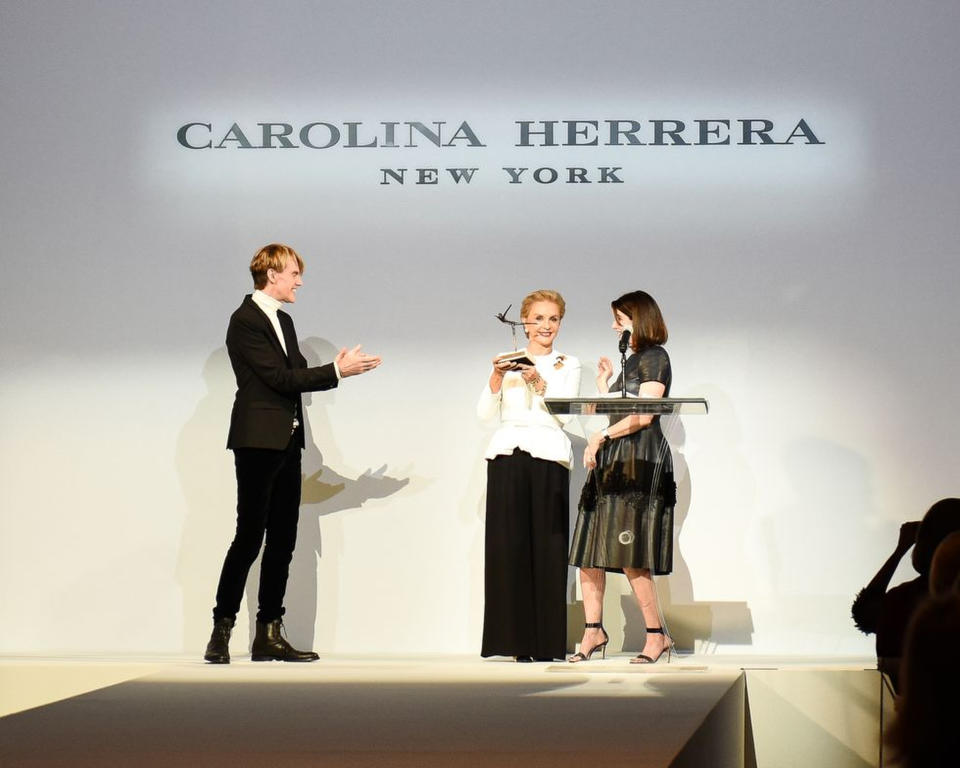
What do you believe was the biggest impact of receiving this award for the Carolina Herrera brand?
Wes Gordon: Neiman Marcus has been a partner since the inception of the brand when Carolina Herrera founded the house in 1981. We deeply cherish four decades of loyalty, partnership and friendship with the group. It is even more special to us that the last time the Distinguished Service Award was given out in 2016, it was bestowed upon Carolina Herrera herself. We are delighted to see this award revived in 2023.
Can you describe the brand’s relationship with Neiman Marcus and how the partnership has impacted Carolina Herrera (the brand) throughout the years, including present day?
W.G.: Neiman Marcus and Carolina Herrera share an inherent love and appreciation for the magic of fashion. As a luxury American house that continues to thrive at the heart of the Garment District on Seventh Avenue, Neiman Marcus has been an unwavering supporter of Carolina Herrera and the American fashion industry through the thick and thin, most recently as a steadfast partner throughout the pandemic.
The client continues to be at the center of our symbiotic partnership with Neiman Marcus. A significant aspect of my role as designer and creative director that I immensely enjoy and savor is meeting clients on the road in partnership with Neiman Marcus, in locations across the country. The conversations I have with these amazing women is so invaluable to me as a designer. We are so appreciative of Geoffroy [van Raemdonck], Lana [Todorovich] and the Neiman Marcus Group’s continued support of Carolina Herrera.
What was happening at Carolina Herrera during the time she won the award in 2016? Any specific launches, categories, ad campaigns, styles, etc. during this time?
W.G.: 2016 marked the 35th anniversary of Carolina Herrera, with the release of the “Carolina Herrera 35 Years of Fashion” book by Rizzoli. It was a time of reflection and triumph for Mrs. Herrera, and the award was not only an acknowledgement of this milestone, but a celebration of the very best of American Fashion, reinforcing our commitment to the customer and the fashion industry at large.
Rosita Missoni for Missoni (1973 award recipient)
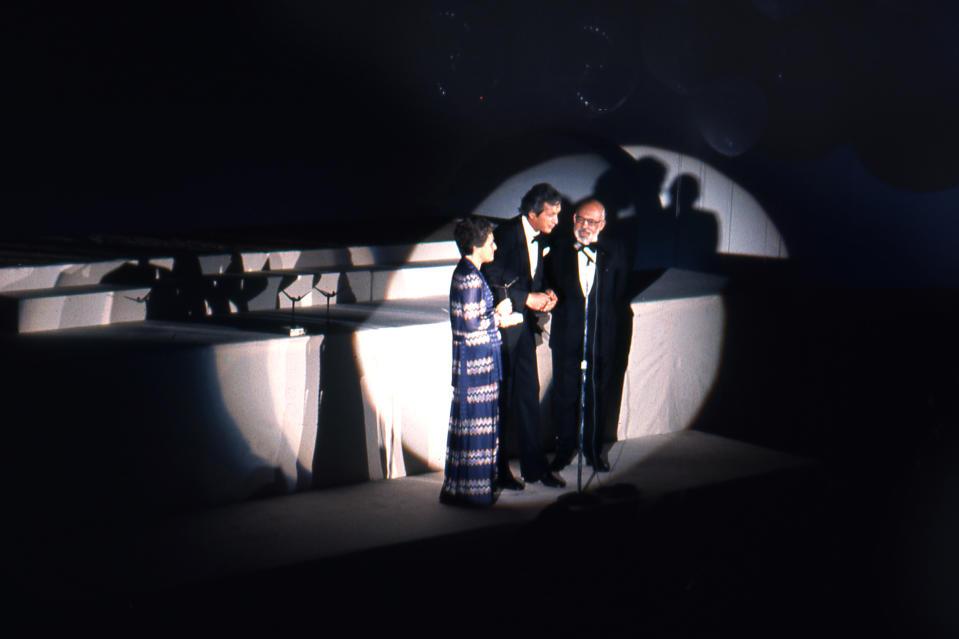
What do you believe was the biggest impact of receiving this award for Missoni?
Rosita Missoni: In 1973 the Neiman Marcus Fashion Award was our first international prize. For us the equivalent of an Oscar. The award, among the many we have collected, was the first and the one we feel most proud of. For me and Ottavio personally, it was a very important award as a recognition of the style that we had invented: “Husband and wife team, whose alchemy has produced new dimensions and color relationships from the crucibles of the traditional knitting machines, and whose daringness has made them the most potent force in knitwear for women and men.” For the brand, it was even more important driving it toward fame on the American market. Communication wasn’t global as it is today, at the time it was limited to insiders. Today such an award would have worldwide and capillary resonance.
Can you describe Missoni’s relationship with Neiman Marcus and how the partnership has impacted the brand throughout the years, including present day?
R.M.: The relationship between Missoni and Neiman Marcus was above all a story between people. We met with Stanley Marcus in 1970 at The Plaza hotel in New York where Diana Vreeland had arranged a meeting with the most prestigious American buyers together with the entire editorial staff of Vogue USA. He surprisingly appeared in person and since then, we remained friends with him and his wife for life. We entered the doors of Neiman Marcus in 1971 and despite changes and developments over time, Missoni has always remained present in their stores. For Missoni, it is the longest continuous collaboration the brand has ever had in its commercial history.
What was happening at the brand during the time Missoni won the award in 1973? Any specific launches, categories, ad campaigns, styles, etc. during this time?
R.M.: In November 1972, Women’s Wear Daily in an editorial “Who Has Fashion Power?” placed the Missonis among the 20 Fashion Powers in the world.
1973 was also a special year for Italian fashion since the Missonis — among a few others — chose to present their collection in Milan, pioneering the future phenomenon that made Milan the capital of fashion Made in Italy. It was also the period the family moved to the new house in Sumirago, in the woods next to the factory we had built five years earlier on a hill “…To work in a place considered ideal for spending the weekend,” as we used to say. In 1973, on the wave of a growing notoriety in the United States, we started a successful collaboration with Fieldcrest for a bed and bath collection, starting the beginning of our experience in the world of home design. It was the time some of the Missoni creations started to be recognized as works of art: the famous fashion photographer and journalist Bill Cunningham in March 1973 donated his own Missoni patchwork sweater to the Costume Institute of the Metropolitan Museum of Art in New York.
Christian Dior (1947 award recipient)
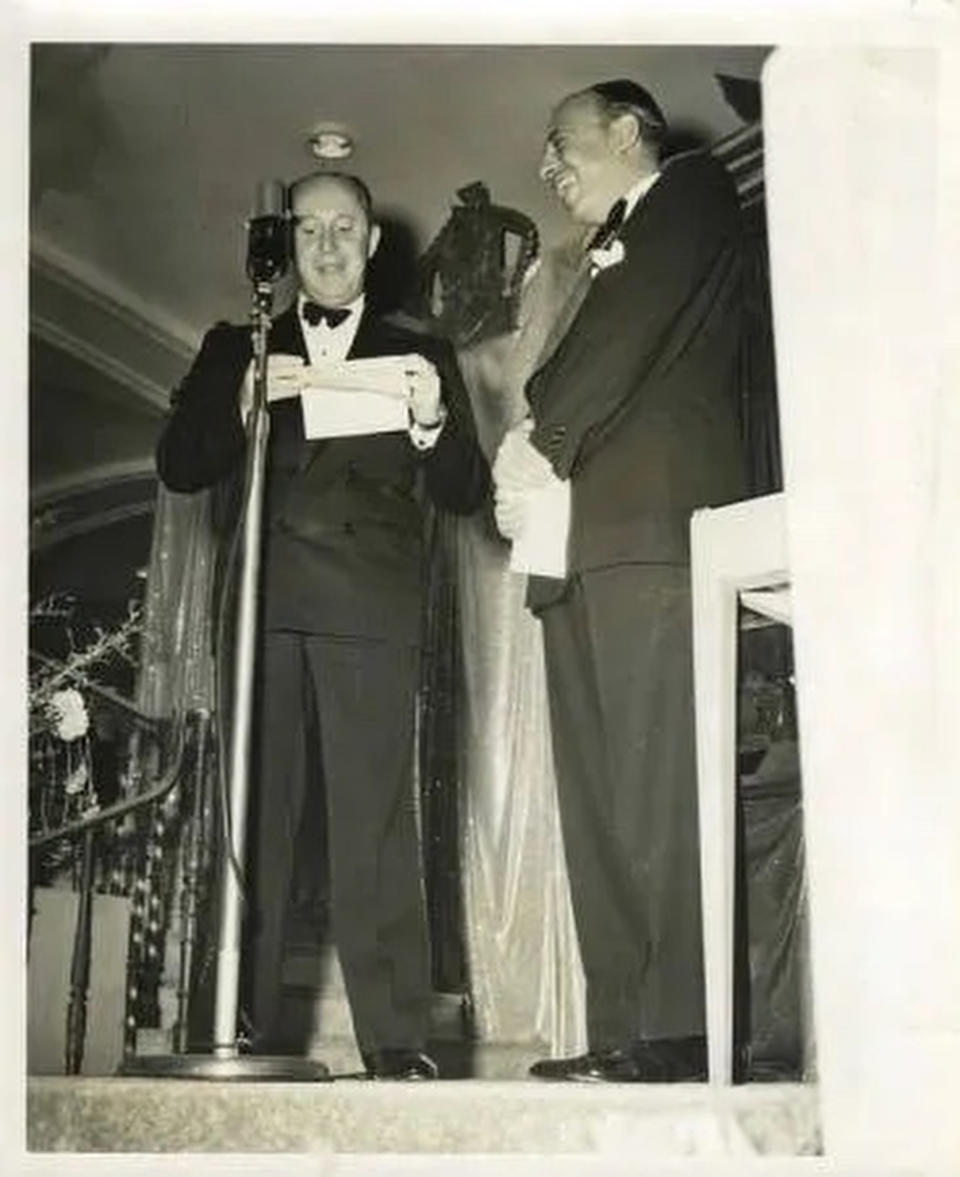
“In September 1947, just months after the opening of his house and the worldwide triumph of the iconic New Look, Christian Dior crossed the Atlantic to receive the Neiman Marcus Award for Distinguished Service in the Field of Fashion,” the fashion house, now part of LMVH Moët Hennessy Louis Vuitton, said in a statement. “Presented annually to leading figures of the couture world by the famous American luxury department store of the same name, this prestigious recompense — often referred to as the Oscar of Fashion — was, in the eyes of the couturier, much more than a personal accolade: ‘What was being recognized was the awakening of French fashion. It was my duty to represent my country on such an honorable occasion, confirming the preeminent place of Paris in this domain,’ Dior confided in his memoirs.
“The award ceremony took place in Dallas, and Christian Dior seized the opportunity to travel through the United States,” the house added. “From New York to Chicago and San Francisco to Los Angeles, he discovered the impact of his creations on American society. This trip also inspired his future silhouettes, as seen in the names of the Dallas and Texas dresses, the Nuit de Chicago sheath, and the Arizona ensemble that he designed shortly after this odyssey, during which he immersed himself in the plural wealth of American culture, a source of fascination for him from then on. Beyond its honorary role, the Neiman Marcus Award confirms and reinforces the indefectible ties uniting the House of Dior from the start with the New Continent. And as a symbolic sign of this creative friendship, in 1958, Yves Saint Laurent, who succeeded Christian Dior as artistic director of the maison, was granted this same precious distinction, linking Paris to Texas.”
Giorgio Armani (1979 award recipient)
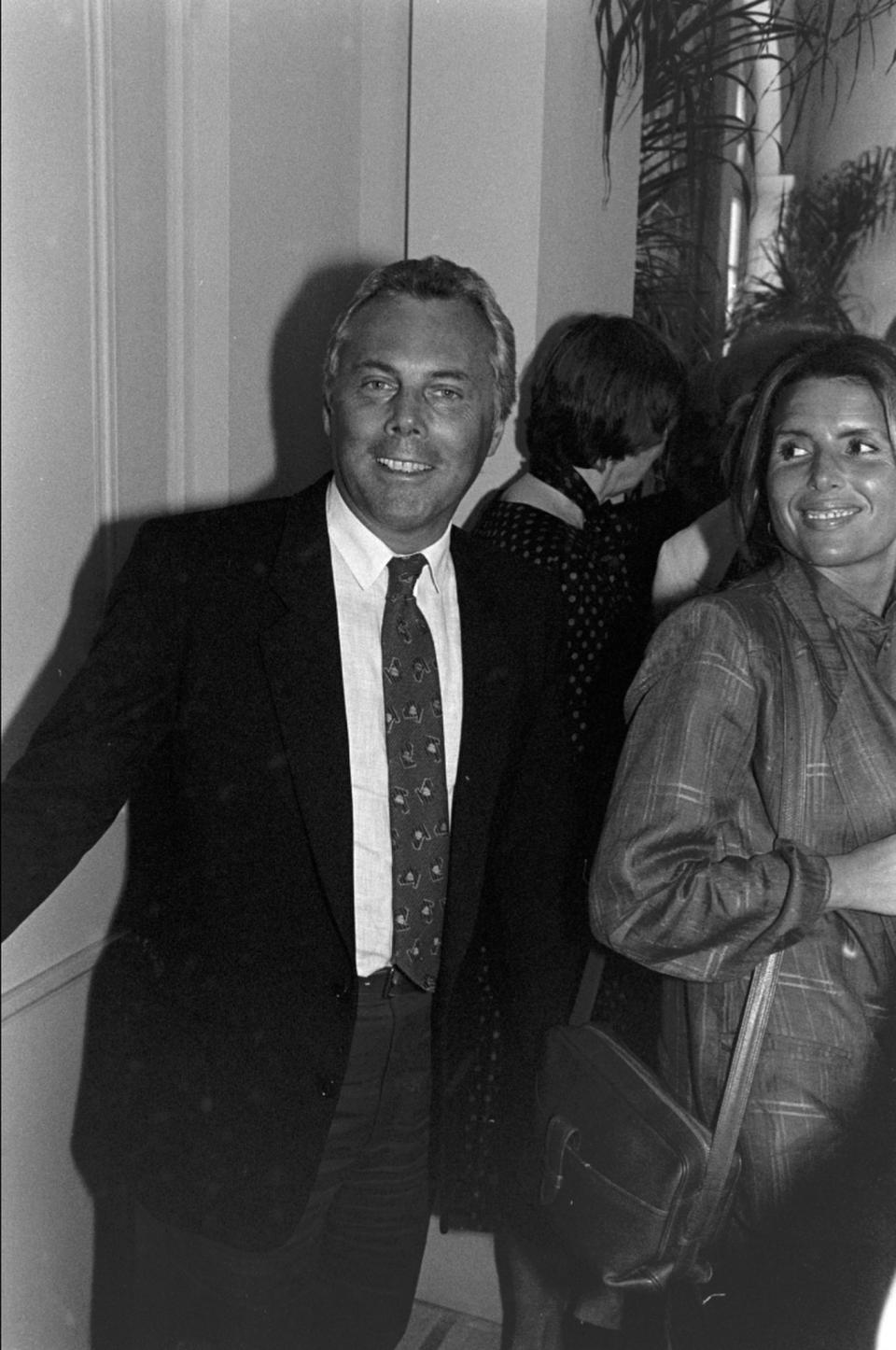
What was your initial reaction to receiving the award from Neiman Marcus and can you share a personal anecdote of the awards ceremony?
Giorgio Armani: I was delighted to receive the award, but also quite surprised. My company was still very young, and it was the year before I would become well-known in America with the release of “American Gigolo,” when Richard Gere would bring my modern, sensual menswear style to the States through his performance. So looking back on it, Neiman Marcus was really ahead of the curve, as in 1979 the Giorgio Armani label had only been in existence for four years. I don’t remember too much about the ceremony, apart from that I felt a little intimidated. I had not spent any time before in the U.S., and while today I feel very at home there, back at the start of my career it almost seemed like an alien place, fast-paced and energetic, and very different to Italy and Milan. But very exciting too.
What do you believe was the biggest impact of receiving the award for your brand and for you personally?
G.A.: It gave me legitimacy in the States. It was in that year, 1979, that I took the considerable step of founding the Giorgio Armani Corp. in the United States. In the context of that business move, receiving the award from Neiman Marcus was like receiving an Oscar for a young actor. You join the pantheon of previous recipients and you feel that you have gained an endorsement from your industry. I was very aware that I was following in the footsteps of previous Italian designers that had been honored with this prestigious award — Missoni, in 1973, and even earlier, Emilio Pucci and Roberta di Camerino in the ‘50s. These were names I had the utmost respect for and that had paved the way for me.
Can you share a personal story about your relationship with Neiman Marcus and how the partnership has impacted you and the Giorgio Armani brand throughout the years, including present day?
G.A.: I have a really strong relationship with Neiman Marcus that is actually born of that award. Because it was to receive it that I made my first trip to America. It was such an exciting journey: seeing the country, and particularly New York, for the first time made a very powerful impression on me. Back then I only knew the U.S. from the movies that I had been watching as a kid. But to be there, and at a time when New York was really lively, and to feel a part of that — was memorable. So Neiman Marcus introduced me to the States and to the American customer and really, from the very beginning, the United States has always been a very important market for me. That’s where my style really took off and my international success began.
What was happening at Armani during the time you won the award in 1979? Any specific launches, categories, ad campaigns, styles, etc. during this time?
G.A.: When I think of 1979, I think of a time of change. I was beginning to play with the idea of denim, at a time when fashion designers did not work with such a mass product as jeans. But it felt so right to me, as I had the intuition to offer an easy and accessible product to a younger audience. And then there was “American Gigolo,” which proved to be such a fundamental turning point for me because my style found a place in the collective imagination through the filter of the cinema screen.
The project began when, to my great surprise, Paul Schrader [writer and director of the movie] contacted me. He came to Milan in late July 1979, along with John Travolta, who was initially supposed to play Julian Kay, and I showed him the sketches for the spring collection I was working on. He told me that the outfits were exactly what he had in mind. This meant that we didn’t really create costumes, the clothes in the film were the same clothes that could be found in my shops, which made all the difference as the public could buy them. And then Richard Gere brought the collection to life with his inimitable walk. The jacket emphasized his muscles and the trousers caressed his legs: it was a revelation for the male body, totally unthinkable before the arrival of deconstructed tailoring.
The film perfectly showcased the work I was pioneering on the unstructured jacket, which will be remembered as the symbol of my fashion because it represented a “revolution” and changed the destiny of the garment. I also believe that “American Gigolo” reflected and was part of a new attitude to clothing in Hollywood. The 1980s marked a time of massive change in Hollywood. In the film industry, young actors were rejecting the theatrics of the old Hollywood red carpet in favor of a new, more natural style, and I became the go-to designer for a fresh approach. In 1978 I dressed Diane Keaton in a man’s jacket for the Oscars when she won Best Actress for “Annie Hall.” I had admired her in Woody Allen’s great film precisely because of her masculine look so I suggested that she dress this way for the ceremony. It was, in a way, recognition of the continuity between the big screen and real life. It inspired a powerful reaction: no actress had ever dressed like that at the Oscars before.
What’s your favorite Neiman Marcus memory?
G.A.: Apart from receiving the award in 1979…I remember staging a charity fashion show in Dallas in 2007 for Neiman Marcus, which was celebrating its 100th anniversary that year. The guest list was created by the Crystal Charity Ball, an organization that raises money for children’s charities. So I flew over for a few days and put on a full runway show for the ladies of Dallas and their husbands in order to fundraise. It was great fun, and the Texans were incredibly welcoming. I did a book signing, too, while I was there, and I remember that while most people came up with their copies of “Armani Backstage,” a book of photographs taken by Roger Hutchings, and wanted inscriptions, one man asked me to sign his Stetson and a young student studying fashion came with a sewing machine he wanted me to sign. Which I did! That was very special.
Leonardo Ferragamo for Salvatore Ferragamo SpA
Salvatore Ferragamo won the award in 1947 and Fiamma Ferragamo won the award in 1967.
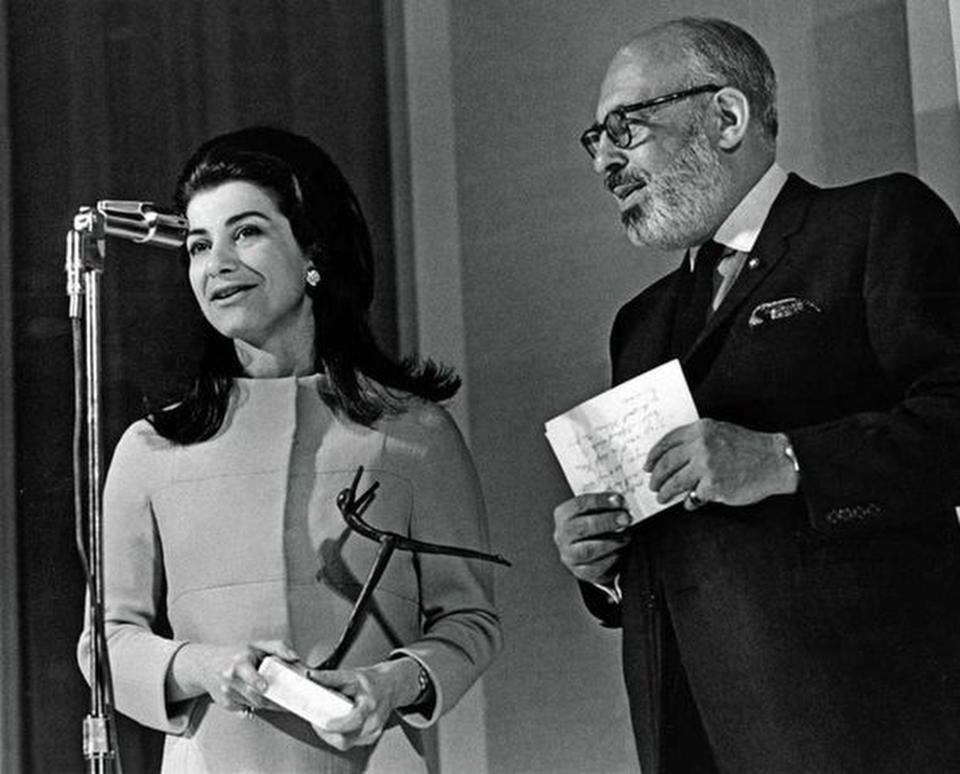
What do you believe was the biggest impact of receiving this award for the brand?
Leonardo Ferragamo: It has been a privilege for us to receive two Neiman Marcus awards, first in 1947 and then in 1967. Neiman Marcus’ enlightened vision marked two significant moments: my father’s efforts to relaunch the business after the Second World War and Fiamma’s intense work a few years after my father’s death to make his dreams a reality and develop the company together with my mother, sisters and brothers.
Can you describe Ferragamo’s relationship with Neiman Marcus and how the partnership has impacted the brand throughout the years, including present day?
L.F.: Ferragamo’s relationship with Neiman Marcus has always been very solid and, above all, continuous from the time my father Salvatore ran the company to when my mother, Wanda Ferragamo, and her children took over. There have been countless partnerships over the years. One of the most notable was the display at the Beverly Wilshire store in Los Angeles when we inaugurated the exhibition of my father’s story at the Los Angeles County Museum in 1992. With the launch of the debut Ferragamo collection by Maximilian Davis, Neiman Marcus continues to be a major strategic partner of ours.
What was happening at the brand during the time Salvatore won the award in 1947 and Fiamma won in 1967? Any specific launches, categories, ad campaigns, styles, etc. during this time?
L.F.: In both 1947 and 1967, special products were created for the awards, including the famous “invisible” sandal. It was designed in 1947 with a wedge in a special shape and an upper made of nylon fishing line. This was an extremely innovative material back then. Other products created at the time were shoes with sculptural heels, alluding to the world of space, a concept my sister Fiamma was exploring at that time. There was no magazine or newspaper in the world that did not acknowledge the originality of these models and the importance of this award. Neiman Marcus has always highlighted the top players in fashion and retail with a focus on excellence, quality, ongoing ambition and the professionalism. This professionalism has been one of the driving forces for the development of our business around the world.
Best of WWD

